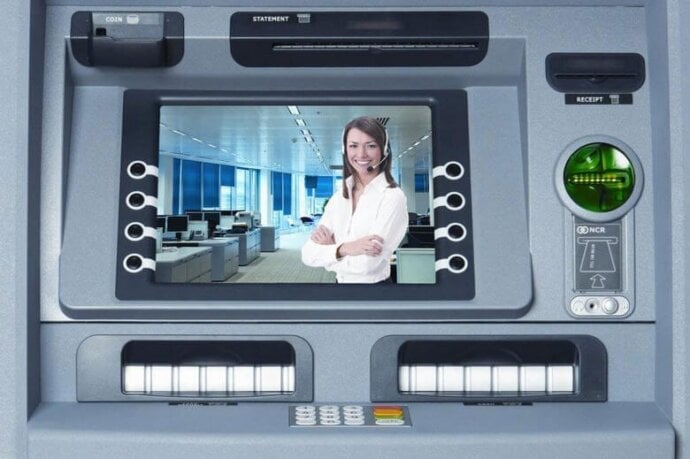VTM (Video Teller Machine)

Video Teller Machine (VTM) (Source)
A Video Teller Machine (VTM) is an electronic banking outlet that allows customers to complete basic transactions, request banking services, or receive immediate assistance through live video conferencing with a remote bank teller.
VTM Advantages
- If you forget your PIN or lose your credit card, you can still resolve your issues via VTM. Since you are connecting face-to-face with a banking representative, you can verify your identity by answering security questions.
- Apart from withdrawing money, you can also request assistance with basic banking questions via video conferencing. Although you may not be able to open a new individual or joint bank account or take out a loan, you can still update the address linked to your account, set a live appointment, or resolve basic financial issues.
- VTMs can be installed outside of bank branches, allowing customers to access banking services and consultations (e.g., use a VA loan calculator) without visiting a physical office.
- Video tellers are available 24/7, including after traditional banking hours, while bank branches do not provide such flexibility.
- Video tellers are not tied to bank branches – instead, they can provide remote assistance from the central office or even from their homes.
VTM Implementation
A Video Teller Machine (VTM) is an innovative solution that integrates branch counters, ATMs, internet banking, mobile banking, and call banking. Multiple modules are built into one machine to enable cash deposits and withdrawals, check deposits, card issuance, investment product purchases, financial consulting, payment services, and more.
In addition to standard card readers, cash slots, a keyboard, and a screen, VTMs are equipped with video conferencing tools, including a camera, microphone, and an extra display. Other advanced features enhance the machine’s functionality:
- A card dispenser allows banks to issue new cards remotely.
- Passport scanners and fingerprint readers provide secure customer identification.
- A document printer enables customers to receive official documents without visiting a branch.
- A smart scanner can automatically read and process client documents in A4 format.
In some countries, VTMs are deployed in private cabins with strict access control.
Case Studies of VTM Implementation

POSB VTMs (Source)
Video banking technology is gaining popularity worldwide. In many cases, audio or video calls alone are not enough for certain clients, as operators may need to show or send charts, tables, or documents (e.g., 2024 W9 form or 1099 forms, loan applications). Today, VTMs are widely used across Asia, the Middle East, and Europe. Video banking and remote transaction processing increase transaction speed without requiring a physical branch.
China Guangfa Bank was the first to introduce VTMs in 2012. The bank proved that customers were satisfied with remote services and the out-of-branch experience. VTMs also helped the bank differentiate itself from competitors.
Bahrain Islamic Bank (BisB) used TrueConf SDK to integrate video conferencing into its ATMs. BisB’s digital branch allows customers to perform various transactions, such as cardless cash withdrawals or deposits, checkbook printing, and instant card issuance through a self-service kiosk.
POSB Bank in Singapore introduced VTMs in 2017. In addition to solving basic banking questions, clients can request debit card reissuance without visiting a branch.
Kuveyt Türk Participation Bank in Turkey launched VTM-based digital branches in 2013. Their VTMs are located in private rooms where customers can conduct business securely. Services are available face-to-face, 24/7.


Follow us on social networks